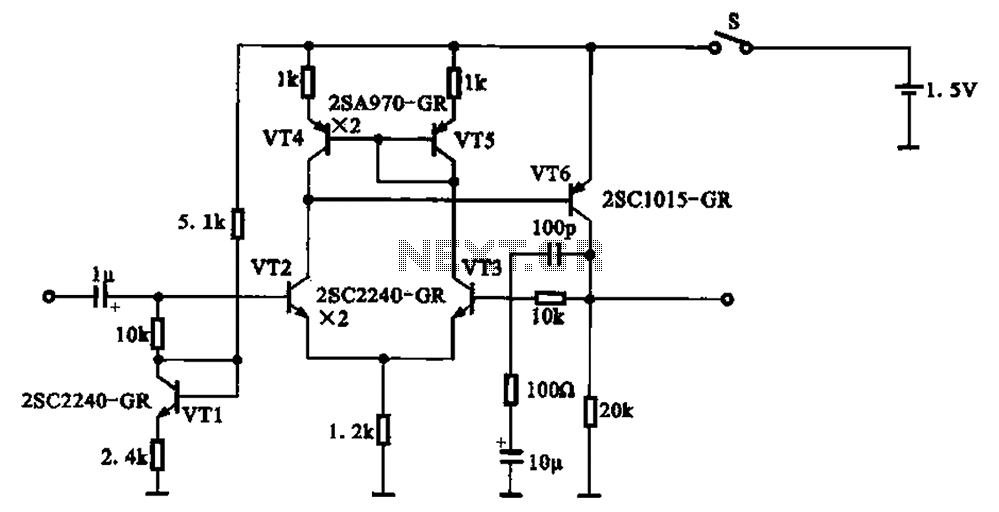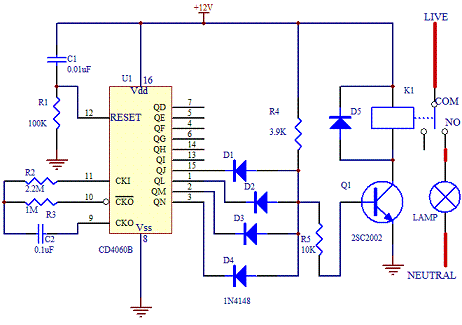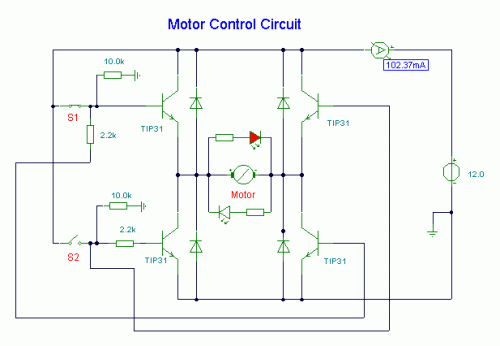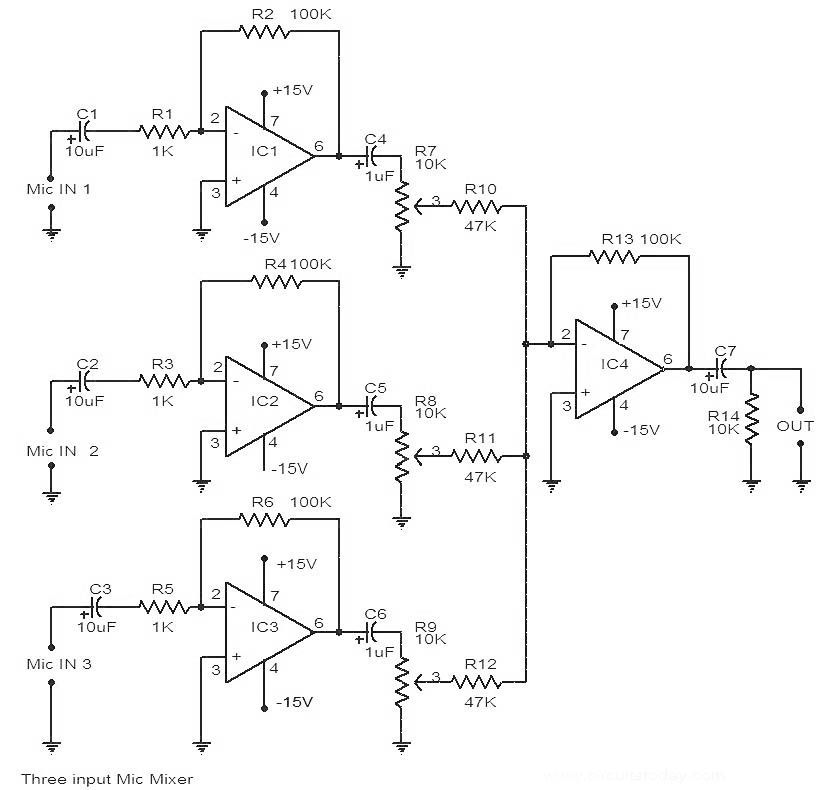
Automatic Tr Switch Circuit
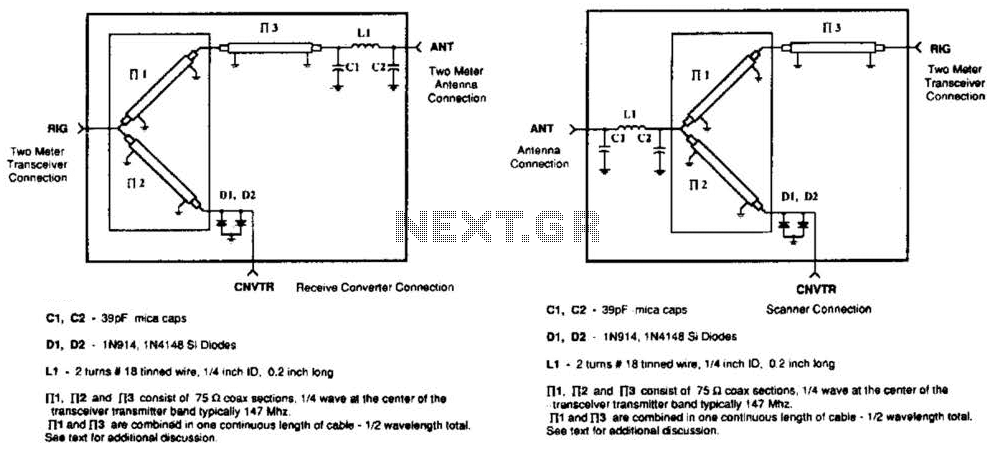
A pair of diodes and a quarter-wave transmission line are utilized as an automatic TR switch. D1 and D2 conduct during transmit periods, short-circuiting the scanner input. In this mode, the quarter-wave line appears as an open circuit. In receive mode, the circuit functions as a Wilkinson power divider.
The circuit design employs two diodes, D1 and D2, configured in a manner that allows them to operate effectively as a transmit-receive (TR) switch. During the transmit phase, both diodes are forward-biased, creating a low-resistance path that short-circuits the scanner input. This configuration prevents any incoming signals from interfering with the transmission process. The quarter-wave transmission line plays a critical role in this setup. When active, it behaves as an open circuit, effectively isolating the scanner input from the output during transmission.
In the receive mode, the circuit transitions to operate as a Wilkinson power divider. This is achieved by the inherent properties of the quarter-wave transmission line, which allows for the division of power between multiple outputs without introducing significant loss. The Wilkinson power divider is known for its ability to maintain impedance matching, ensuring that reflections are minimized and the power is efficiently distributed among the outputs. This dual functionality of the circuit allows for seamless switching between transmitting and receiving modes, making it suitable for applications in communication systems where rapid transitions between states are necessary.
The design must ensure that the diodes are selected based on their switching speed and reverse recovery time to minimize any delay during the transition between transmit and receive modes. Additionally, careful consideration of the quarter-wave line's characteristic impedance is crucial to maintain the desired performance in both operational states. Overall, this circuit exemplifies a compact and efficient solution for automatic TR switching in RF applications. A pair of diodes and a quarter-wave transmission line are used as an automatic TR switch. D1 and D2 conduct during transmit periods, short- circuiting the scanner input. In this mode,-the K-wave line appears as an open circuit. In receive, the circuit acts as a Wilkinson power divider.
The circuit design employs two diodes, D1 and D2, configured in a manner that allows them to operate effectively as a transmit-receive (TR) switch. During the transmit phase, both diodes are forward-biased, creating a low-resistance path that short-circuits the scanner input. This configuration prevents any incoming signals from interfering with the transmission process. The quarter-wave transmission line plays a critical role in this setup. When active, it behaves as an open circuit, effectively isolating the scanner input from the output during transmission.
In the receive mode, the circuit transitions to operate as a Wilkinson power divider. This is achieved by the inherent properties of the quarter-wave transmission line, which allows for the division of power between multiple outputs without introducing significant loss. The Wilkinson power divider is known for its ability to maintain impedance matching, ensuring that reflections are minimized and the power is efficiently distributed among the outputs. This dual functionality of the circuit allows for seamless switching between transmitting and receiving modes, making it suitable for applications in communication systems where rapid transitions between states are necessary.
The design must ensure that the diodes are selected based on their switching speed and reverse recovery time to minimize any delay during the transition between transmit and receive modes. Additionally, careful consideration of the quarter-wave line's characteristic impedance is crucial to maintain the desired performance in both operational states. Overall, this circuit exemplifies a compact and efficient solution for automatic TR switching in RF applications. A pair of diodes and a quarter-wave transmission line are used as an automatic TR switch. D1 and D2 conduct during transmit periods, short- circuiting the scanner input. In this mode,-the K-wave line appears as an open circuit. In receive, the circuit acts as a Wilkinson power divider.
